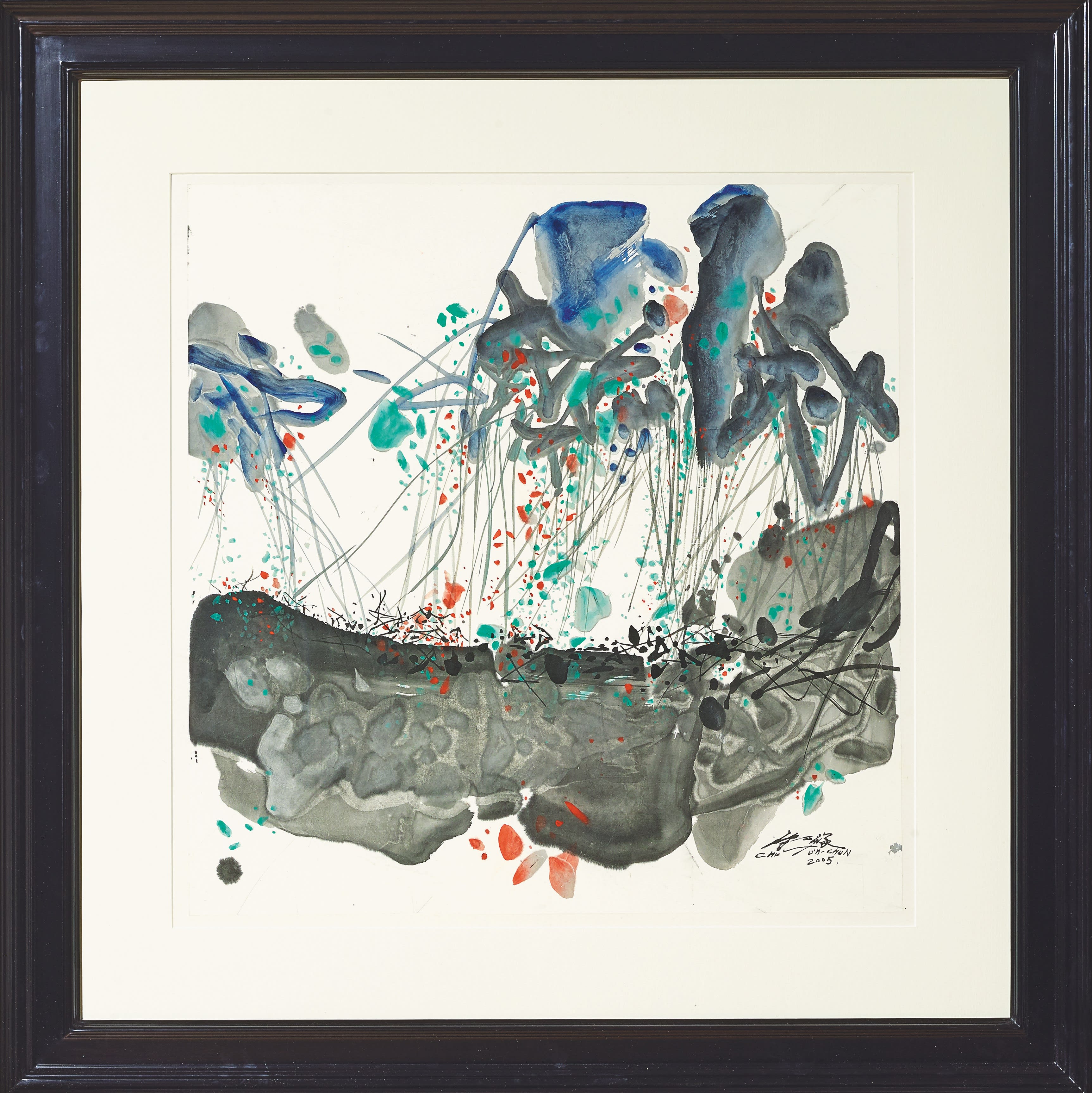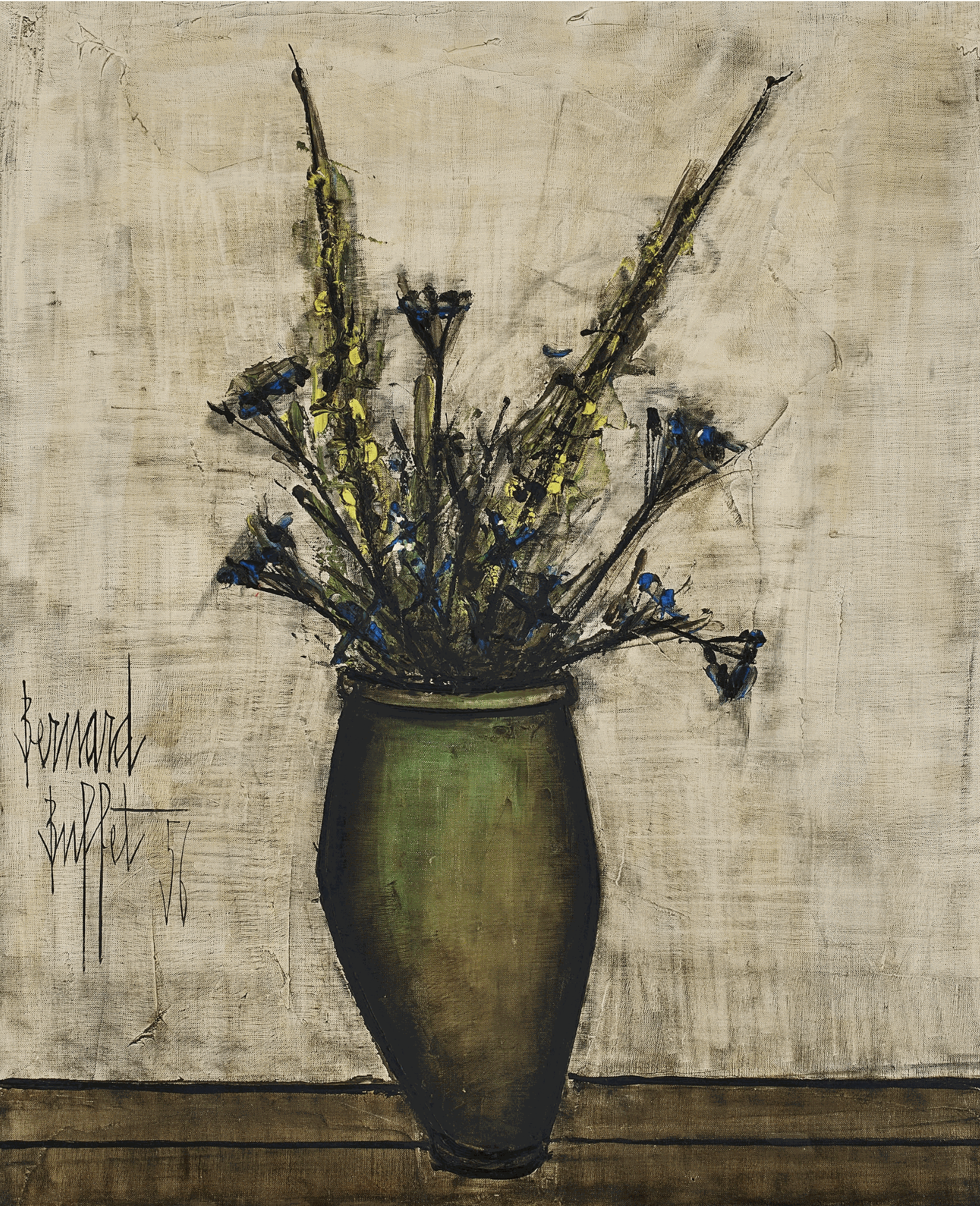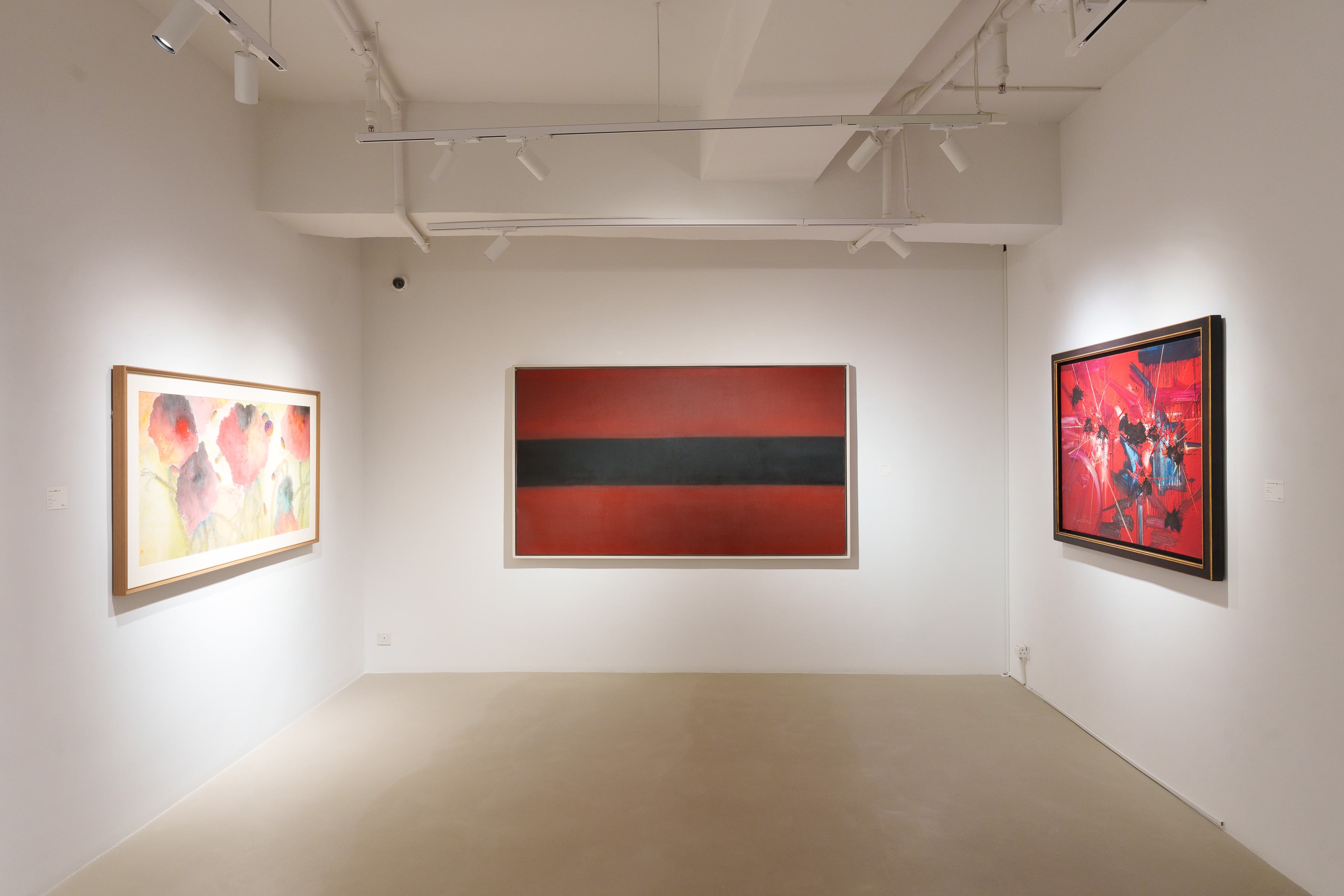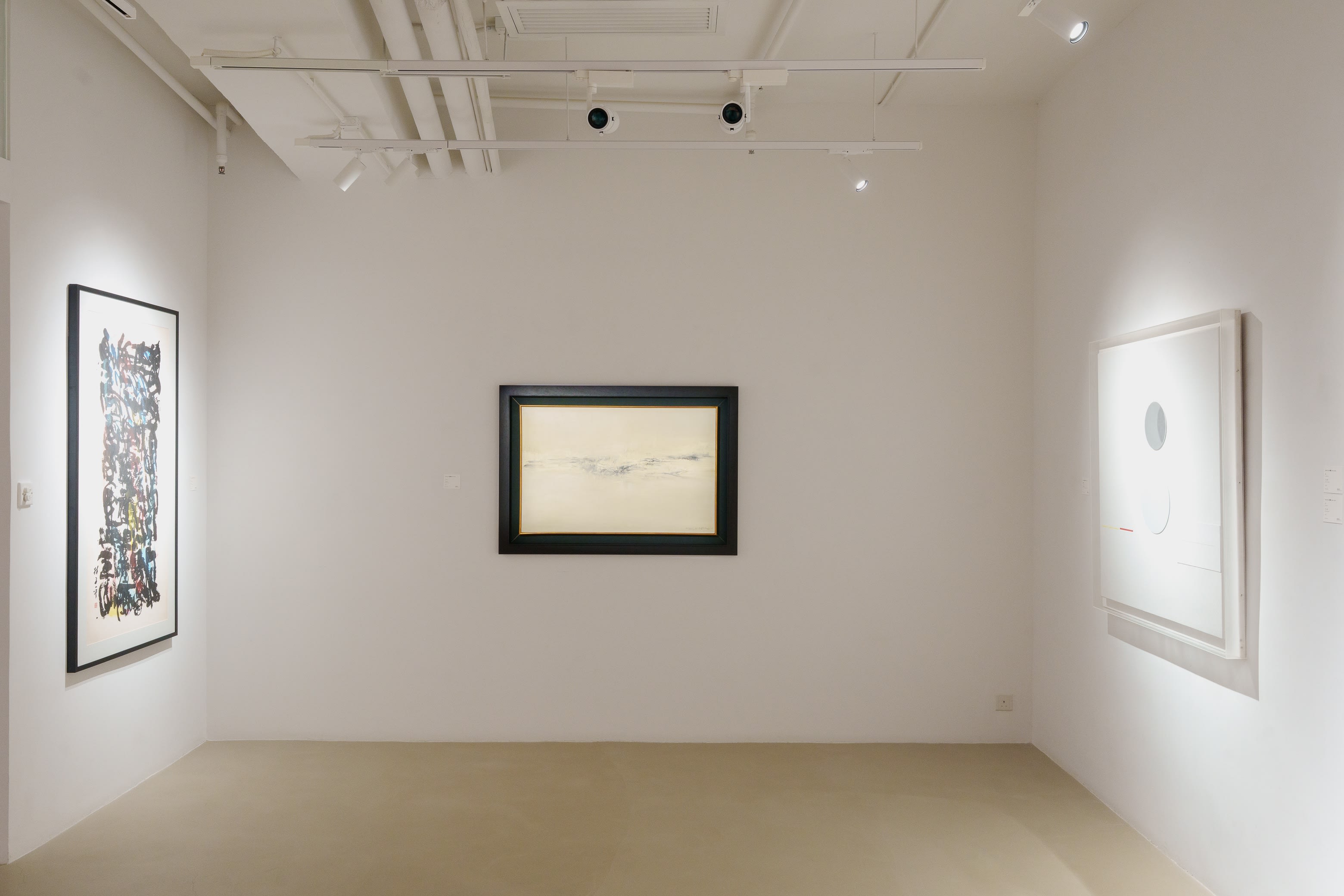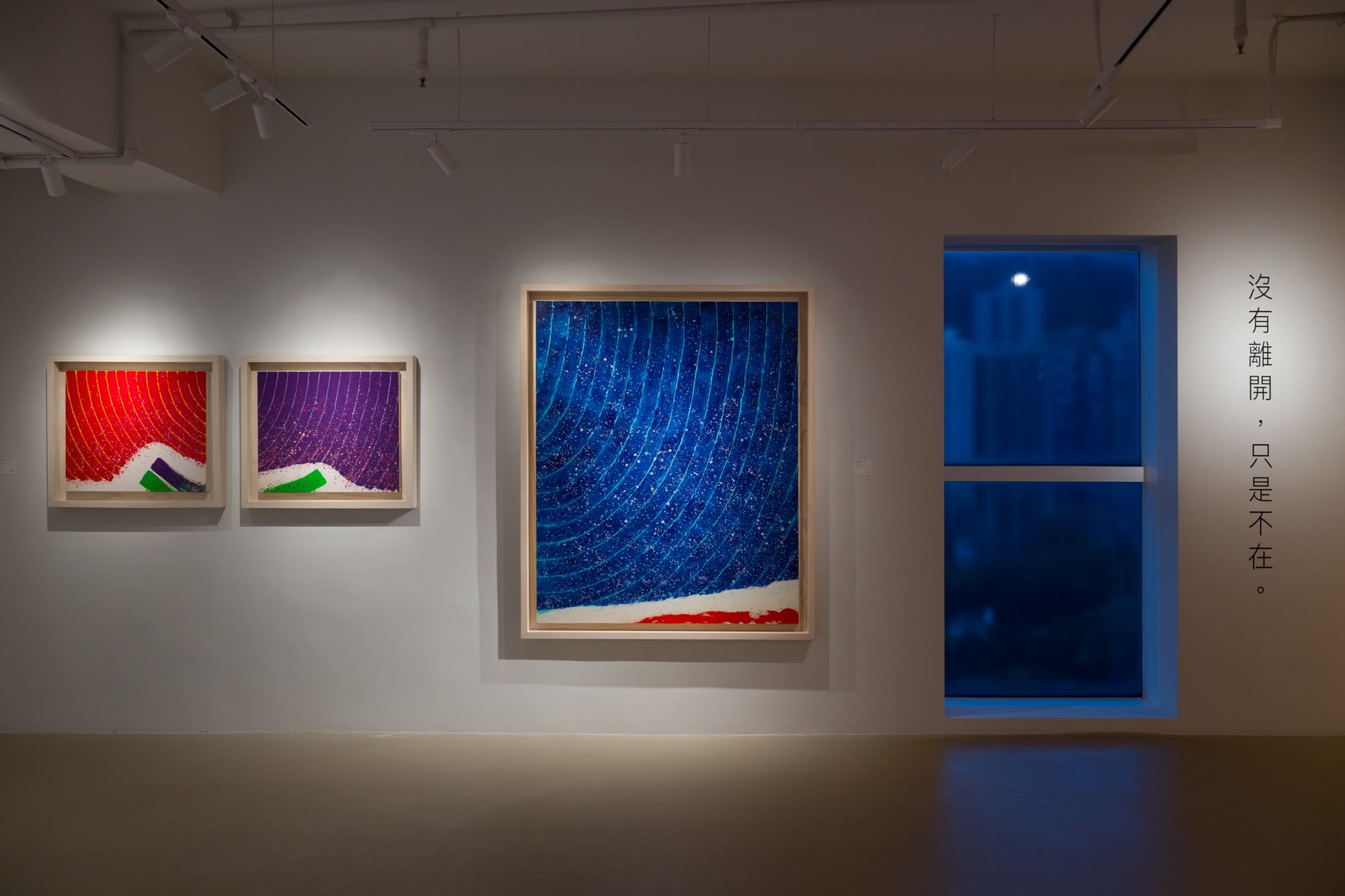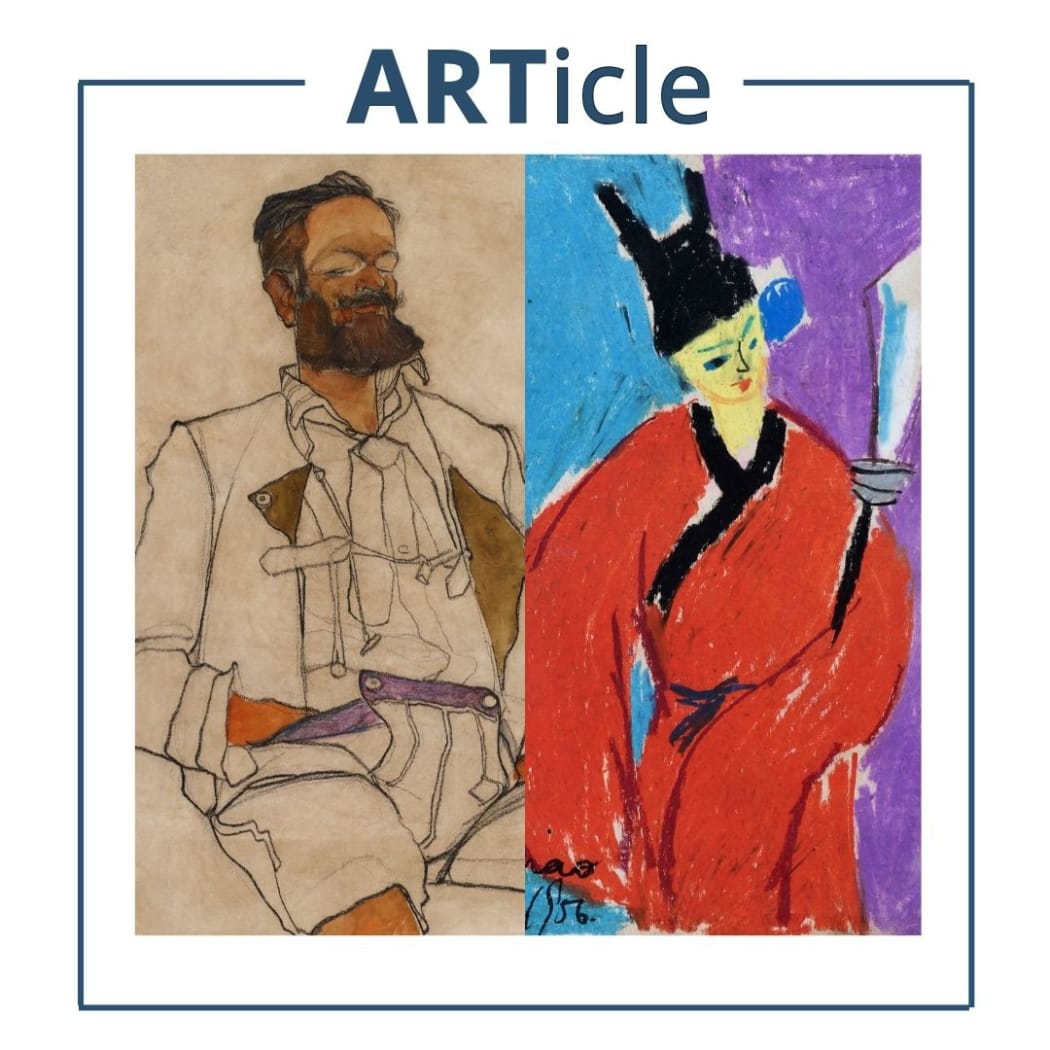
On March 18, 2025, 3812 Gallery Hong Kong proudly unveiled "When Schiele Meets Peking Opera Figure: Global Modern and Contemporary Masters Exhibition”. This marks the first major masters group exhibition that I have curated in my new as a curatorial advisor following my departure from the auction house.
The co-founders of 3812 Gallery, Mr. Calvin Hui and Mr. Mark Peaker, are exceptional cultural entrepreneurs and long-time friends of mine. For over a decade, expanding from Hong Kong to London, their gallery has led the charge in promoting important Chinese artists such as Hsiao Chin, Liu Guofu, Ma Desheng, and Wang Jieyin, and is among the very few Hong Kong galleries to have successfully established an international presence.
During my time at the auction house, Calvin and I had frequent business exchanges. After I left, it was Calvin who first initiated the idea of a collaboration. He offered to leverage 3812 Gallery’s venue in Central, Hong Kong, to stage a global modern and contemporary masters exhibition during “Art March Hong Kong”. The idea soon took shape: I would source works by internationally renowned masters from private collectors, to be exhibited alongside works by 3812 Gallery’s represented artists."
I am grateful for Calvin’s generosity in allowing me to seamlessly carry forward my expertise in consignment and curation into this new chapter of my career. In return, this exhibition also serves as 3812 Gallery’s first systematically curated secondary market show — a milestone in the gallery’s business development and expansion.
Exhibition View
By the nature of transaction, the art market can be loosely divided into the primary market and the secondary market. The primary market refers to works that enter the market directly from the artist or their estate, while the secondary market involves artworks that are already in the hands of collectors and re-enter the market through resale. It is a case in point of primary market when a gallery represents an artist and sells their works to collectors. When a collector later consigns the work to an auction house for resale, it exemplifies a transaction in secondary market. As the art market matures, it is increasingly common for galleries to source artworks from collectors for secondary transactions, and for auction houses to work directly with artists for primary market sales. This kind of cross-market and cross-party operation has become a growing trend in the ever-expanding and booming global art market.
However, this current collaboration—between a former senior expert from an international auction house and a gallery in a joint curatorial effort—remains a preciously rare form of cross-disciplinary partnership in the Asian art world, embodying a brand new endeavour and a breakthrough in the industry.
Egon Schiele, Bildnis eines Herren (Carl Reininghaus) , 1910
Gouache, watercolor and black Conté crayon on paper, 44.2 x 31.1cm
Once the news of this collaboration was announced, many long-time collector friends were very supportive, keenly contributing epic works by eminent artists. Among them was a seasoned high-brow collector with exquisite taste who offered Bildnis eines Herren (Carl Reininghaus) (1910), a remarkable watercolour and gouache work by Austrian prodigy Egon Schiele. Born in 1890, Schiele was a student of Gustav Klimt, the pioneer of the Vienna Secession. Schiele’s works are marked by their unfettered force and energy complete with restless and agitated intensity. His sharply clear-cut contoured lines, coloured with weathered and dappled hues, became his signature style. Even at a young age, he already shone with brilliance. Unfortunately, he died in 1918 from the Spanish flu, becoming a spectacular but fleeting star in the history of modern art.
Schiele’s Bildnis eines Herren: a prodigy and his like-minded collector
Created in 1910, Bildnis eines Herren (Carl Reininghaus), at a pivotal moment when the 20-year-old Schiele, having just been deeply influenced by the works of Edvard Munch and Vincent van Gogh, was undergoing a radical metamorphosis in his artistic practice. The man depicted, Carl Reininghaus, was a wealthy Austrian industrialist and a major collector and patron of both Schiele and Gustav Klimt. Reininghaus spared no effort in supporting Schiele and their friendship lasted throughout the artist’s life. This work was created at the very beginning of their friendship.
In the portrait, Reininghaus is dressed casually in short hunting attire with an open collar, hands in his pockets, eyes shut in repose. One can’t help but speculate that he and Schiele had just enjoyed a pleasant afternoon together—perhaps an outing followed by a light-hearted chat and tipple. Reininghaus, bathed in warm sunlight and slightly tipsy, while Schiele swiftly took up his brush to the canvas, giving birth to the masterpiece.
Schiele’s acute, dexterous line is no much a brushstroke as sculpted contour—bringing his close friend’s composure and measured demeanour vividly to life. The more I pore over this piece, the more I feel that Schiele found a sense of safety in this kindred soul, like the warmth and security a father or elder brother might offer. It seems that Reininghaus’s presence provided a soothing shelter for Schiele’s fiery, high-strung, and anxious heart.
Dr. Gerhard Zettl, the Austrian Consul General in Hong Kong (left) and 3812 Gallery’s Co-founder Calvin Hui
This work has an impressive publication and exhibition profile, including its display at the Neue Galerie in New York—a museum dedicated to promoting twentieth-century German and Austrian masters—in both 2006 and 2015, as well as at the Fondation Louis Vuitton in Paris in 2019. Upon confirming the participation of this piece in our exhibition, Calvin and I agreed it is likely the first Schiele work ever publicly exhibited in a gallery in Hong Kong, if not in Asia as a whole. Dr. Gerhard Zettl, the Austrian Consul General in Hong Kong, was thrilled upon hearing the news and graciously agreed to officiate the exhibition’s opening and deliver remarks.
Hsiao Chin, Chinese Opera Characters - 6, 1956
Crayon on paper, 27 x 20.5cm
Calvin and I also discussed selecting a work by an Eastern artist to conjure a dialogue with Schiele’s piece. He then presented Chinese Opera Characters - 6, an early painting by the great Chinese artist Hsiao Chin (1935–2023), as a perfect counterpart. Featuring a painted opera warrior in bold, Fauvist tones with potent colour-block collisions, the work creates a striking juxtaposition and echo chamber with Schiele’s. Despite differences in time and geography—Schiele being a European artist, and Hsiao an Asian one—both works were created when the artists were in their early twenties, the prime time, capturing the emergence of their unique artistic voices.
It is also worth noting the intriguing contrast: while traditional Western art has often emphasized the expressiveness through colour and Eastern art through the line of sketch, here we see the reverse in the application of techniques —Schiele, a Western artist, focuses on masterful lines while Hsiao, an Eastern artist, let his work speak with colour. This contrast reflects the cross-pollination and convergence brought about by globalisation on both Eastern and Western art traditions in the 20th century. By presenting these two pieces side by side, we highlight this dynamic of cultural and aesthetic exchange.
Photo of “Navigating the Hong Kong Art Scene” learning program with Sotheby’s Institute of Art London, from April 25 to 29, 3812 Gallery as a learning hub
From April 25 to 29, I co-organised the “Navigating the Hong Kong Art Scene” study program with Sotheby’s Institute of Art London, using 3812 Gallery as a learning hub. In the class, guest lecturers were invited to impart against the backdrop of the works by Schiele and Hsiao Chin—a miniature of a powerful intersection of Eastern and Western cultural dialogues.
Sanyu’s Nu féminin debout: a rarity among the “Cosmic Thighs”
Another work presented to be engaged in dialogue with Schiele’s is Nu féminin debout (1938) by Sanyu—one of the most legendary figures in the history of Chinese modern art. From the 1920s, Sanyu took an expedition in Paris, immersing himself in the culturally vibrant and artistically flourishing era known as the "Roaring Twenties" and becoming part of the École de Paris. During his first decade in Paris, Sanyu rarely created oil on canvas, but rather he focused on sketching. He frequented the Académie de la Grande Chaumière to sketch nude models, or he would sketch men and women of all kinds in cafes. Blending traditional Chinese ink with Western-style sketching, and infusing the aesthetics afforded by visual distortion through camera lens with the whimsical surrealism, he bestowed the depicted female nude with an over-the -top voluptuous built exuding a tinge of humour – erotic without being vulgar. The beauty shines through.
The poet Xu Zhimo had the first encounter with Sanyu during his travels in Europe in 1925 and the memory had ever sticked in his mind. In his essay “Sir, Have You Seen Gorgeous Flesh?”, Xu subtly portrayed a Parisian artist clearly inspired by Sanyu. In a 1929 letter to Liu Haisu (a prominent 20th-century Chinese painter), Xu wrote:
“The Sanyu household is especially virtuous and beautiful. Ma Gu [referring to Sanyu’s French wife, Marcelle Charlotte Guyot de la Hardrouyère] makes delicious noodles. I wish I could stretch my neck all the way all the way to Paris to partake in your joy.”
On February 9, 1931, Xu said again in a letter to Liu Haisu:
“Where is Sanyu now? Chen Xueping brought back a ‘Cosmic Thigh’—a rare and precious masterpiece.”
From that moment, Sanyu’s nudes were affectionately dubbed “Cosmic Thighs” in art history—a poetic nickname celebrating his stroke of genius and mastery.
Undoubtedly, the front view of Sanyu’s Nu féminin deboutis legendary, but what makes the work even more exceptional is the inscription on the lower left of the back:
“Offered for the relief of the wounded soldiers in Spain – July 7, 1938, Paris.”
Nu féminin debout (1938) by Sanyu 常玉 (1901-1966), Ink on paper, 44 x 26cm, and inscription on the back
This precisely records the painting’s year, month, day, place, and purpose of creation—making it an almost one-of-a-kind piece.
The first sight of the inscription gave me a frisson of excitement and poignance, reminiscent of the another work I handled in 2019 while working at the auction house—Sanyu’s late-period oil painting masterpiece Nu. When we removed the painting from the consignor’s wall, we discovered a handwritten inscription by Sanyu on the back of the canvas:
“…If I had not experienced the hardship at that time, I would have painted more intensively and would not have waited until now to complete this piece; it was long overdue for competition. A thousand regrets. Alas, I make this note here in April 1965.”
The handwriting on both works is virtually identical, corresponding to one another. They both were handled in my hands, which I am convinced, is a remarkable stroke of fate.
Sanyu, Nu (1965), oil on fibreboard, 122.5 x 135 cm and inscription on the back
In October 2016, I curated a special sale titled “Ineffable Beauty: Sanyu’s Figure Drawings”, aiming to reappraise the value of Sanyu’s works on paper which had not garnered much market attention at the time. Through a thorough analysis of the artist’s active years, artistic achievement, and the number of surviving works as artistic legacies , I concluded that Sanyu’s paper works should be appreciated on par with those of Egon Schiele. The sale was both a critical and commercial success, sparking a frenzy of intrigue in collecting Sanyu’s works on paper. That sale brought me into prominence in art market.
Now, nearly a decade later, as I recounted this story during the opening of the current exhibition, I couldn’t help but reflect:
“It takes less than ten seconds to walk from Sanyu’s work here to Schiele’s over there. But it took me ten full years to present Sanyu’s works on paper and then Schiele’s to the audience.”
Lin Fengmian’s Forest: epitome of century-old transformation in Chinese Landscape Painting
Following the thread from Schiele, Hsiao Chin, and Sanyu, this exhibition flings a door to the representational world of the 20th century: from Guan Liang’s Fruits and Fish (1960s) and Shanghai Waibaidu Bridge (The Bund) (1970) to Léonard Tsuguharu Foujita’s La voile rouge, à Concarneau (1918) and Dong Kingman’s 55 Days at Peking (1963); from Chiu Ya-tsai’s Portrait in the Red Background (1980-1990) and Fang Shaohua’s Portrait No. 4 (1985) to works by Vietnamese masters such as Mai Trung Thu’s La jeune fille en gris (1948) and Le Pho’s La mère et l’enfant (1972) – they collectively form a richly diverse global tapestry.
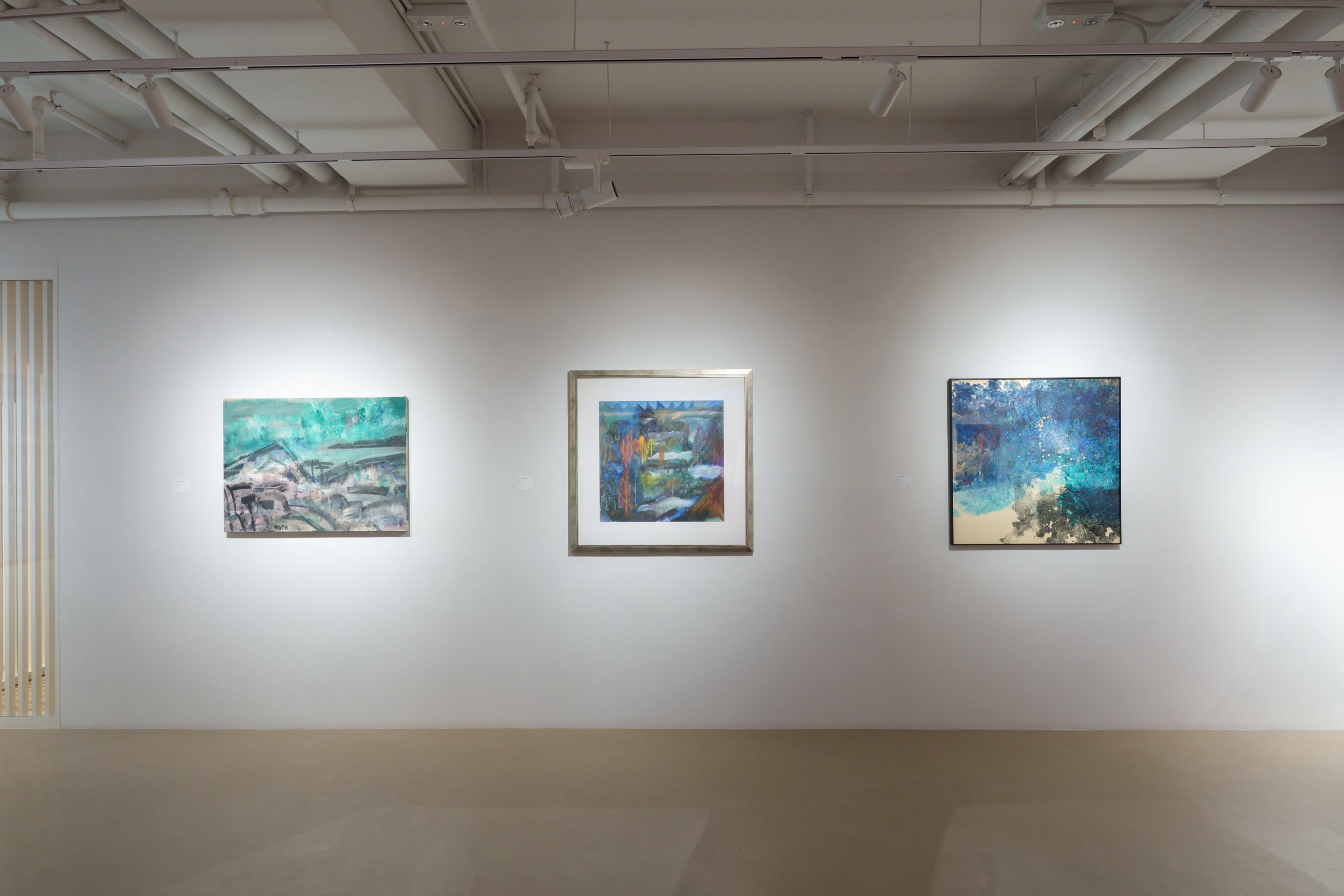
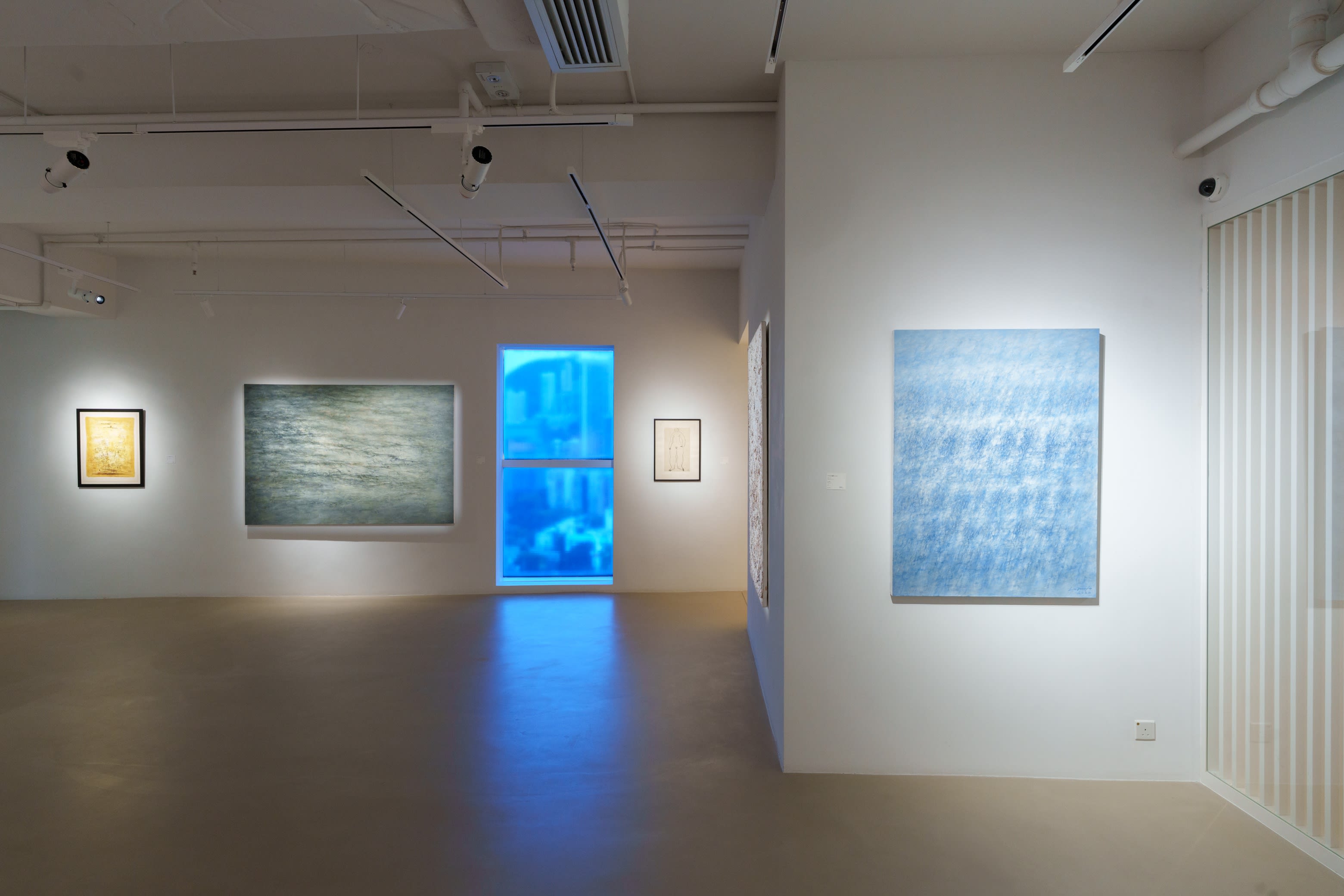 Exhibition view
Exhibition view
On the other side of the gallery, I placed Lin Fengmian’s Forest, a magnificent colour ink painting, as the central axis around which a miniature history of nearly a century’s worth of transformations in Chinese landscape painting unfolds. Lin Fengmian is widely recognised as the trailblazer of Chinese modernist art. He was the first to introduce Western modernist ideas as a reference point to revamp the rigid and stagnant painting traditions inherited from the late Qing era. Forst, resplendent in vibrant hues, shows not only the influence of Impressionist oil painting in its reshaping of richly coloured ink traditions, but also offers a glimpse of the scene -- towering, cloud-piercing mountains -- Lin was immersed in when he relocated from Hangzhou to Chongqing along with the National Art Academy during the Second Sino-Japanese War. The painting bears the profound imprint of its historical moment and stands as a rare masterpiece.
Chu Teh-Chun, BRU 05 No.6, 2005
Ink and color on paper, 70 x 67cm
Flanking this core piece Forest are works that comprise:
- Chu Teh-Chun’s (1920–2014) BRU 05 No.16 (2005)
- Wang Jieyin’s (b. 1941) Green Skies (2017)
- Raymond Fung’s (b. 1952) Breathing (41) (2014)
- Liu Guofu’s (b. 1964) Open Space No. 22-3 (2022)
A glance through the artists’ generational span and their distinct styles reveals that Chinese landscape painting has undergone major transformation and renewal every decade or two, suggestive of Chinese artists’ continuous artistic attention and refinement to this genre.
Mileu of Asia and Europe: a dialogue among postwar masters
Abstract art represents a vital chapter of 20th-century art, therefore I intend the exhibition to be opened and concluded both with abstract works. Upon entering, visitors are welcomed by Bernard Buffet’s Fleurs dans un pot (1956). Turning around, visitors will set into the first abstract section: Chu Teh-Chun’s Diffractions alertes 2 (1983-1984) at the centre, flanked by Cheong Soo Pieng’s Anxiety (A New Day) (1965) on the left and Zao Wou-Ki’s rare lithograph Flying Birds (1954) as well as Liu Guofu’s Pervasion-1 (2015) on the right.
Bernard Buffet, Fleurs dans un pot , 1956
Oil on canvas, 73 x 60cm
Born in Xiamen in 1917, Cheong Soo Pieng studied at the Xiamen Academy of Fine Arts and Shanghai Xin Hua Art College in the 1930s. After the war, he emigrated to Singapore, where he taught at the Nanyang Academy of Fine Arts. He became a pioneer of Nanyang art and an important figure in international abstraction. In 1961, he held a solo exhibition at the Redfern Gallery in London — the very same venue where Zao Wou-Ki would debut in the UK in 1962 and 1963. It was during this period that Cheong began to cultivate his postwar abstract language, and his 1965 work Anxiety (A New Day) stands as a seminal piece at that time.
The exhibition is curated for an immersive and visceral experience: a dynamic discourse with close proximity with Chu Teh-Chun and Liu Guofu, injected with an impactful resonance with the landscape suite anchored by Lin Fengmian’s Forest, which carries on all the way to the far end of the space where the final chapter of the exhibition adds a thought-provoking finishing touch.
Exhibition view
At the far end of 3812 Gallery lies a rectangular, enclosed space—an ideal spiritual zone imbued with a meditative atmosphere. In this contemplative area, we set the ethereal tone on each end with two masterpieces: Zao Wou-Ki’s 06.03.63 (1963) from his iconic “Hurrican Period” (a period marking Zao’s crest of his artistic experimentation, spanning from 1959 to 1972, characterised by explosions of colours and energetic compositions), and Richard Lin’s15-7-58 (1958). Both works coincidentally share a horizontal “one-stroke” composition. There is a sense of stillness oozing out of the Zao’s untamed movement of nature, where colours and lines join and fuse in free flow and breath. Lin’s monumental canvas—possibly among the largest of his known works—communicates a pinnacle of serenity, punctuated with intense solemnity and gravitas.
Flanking 06.03.63 are abstract calligraphies by Singaporean master Lim Tze Peng, who lived to 104, as well as Richard Lin’ssignature white-on-white abstract Painting relief (1961) alongside Hsiao Chin’s emblematic Il Silenzio (1962) and La Forza (1962) from the Punto movement. Flanking the 15-7-58 are lyrical abstractions from left to right-- Châtiments concertés (1990) by French master Georges Mathieu, P1974-G38 (1974) by Hans Hartung and Autumn Colour (2017) by Yang Yanping —together forming a magnificent panorama.
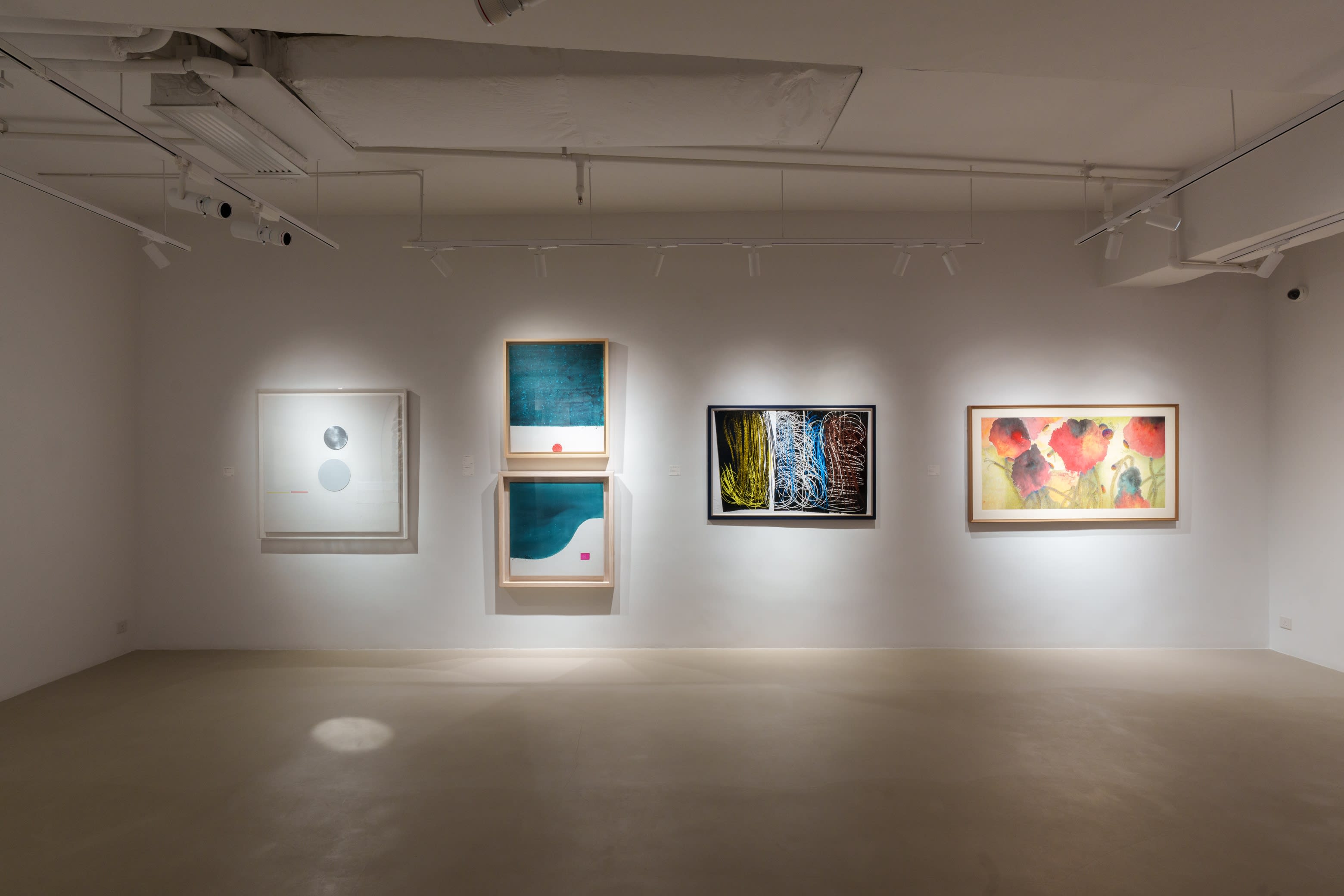
Exhibition view
Originally scheduled to run until April 30, 2025, this international exhibition of postwar and contemporary masters has been extended until May 29 in response to the rave reviews and applaud from collectors. While I am crafting this piece, the show is drawing to a close. I would like to express my heartfelt gratitude to the 3812 Gallery team and all the collectors whose unwavering support made this remarkable exhibition possible and enriched it with profound meaning.



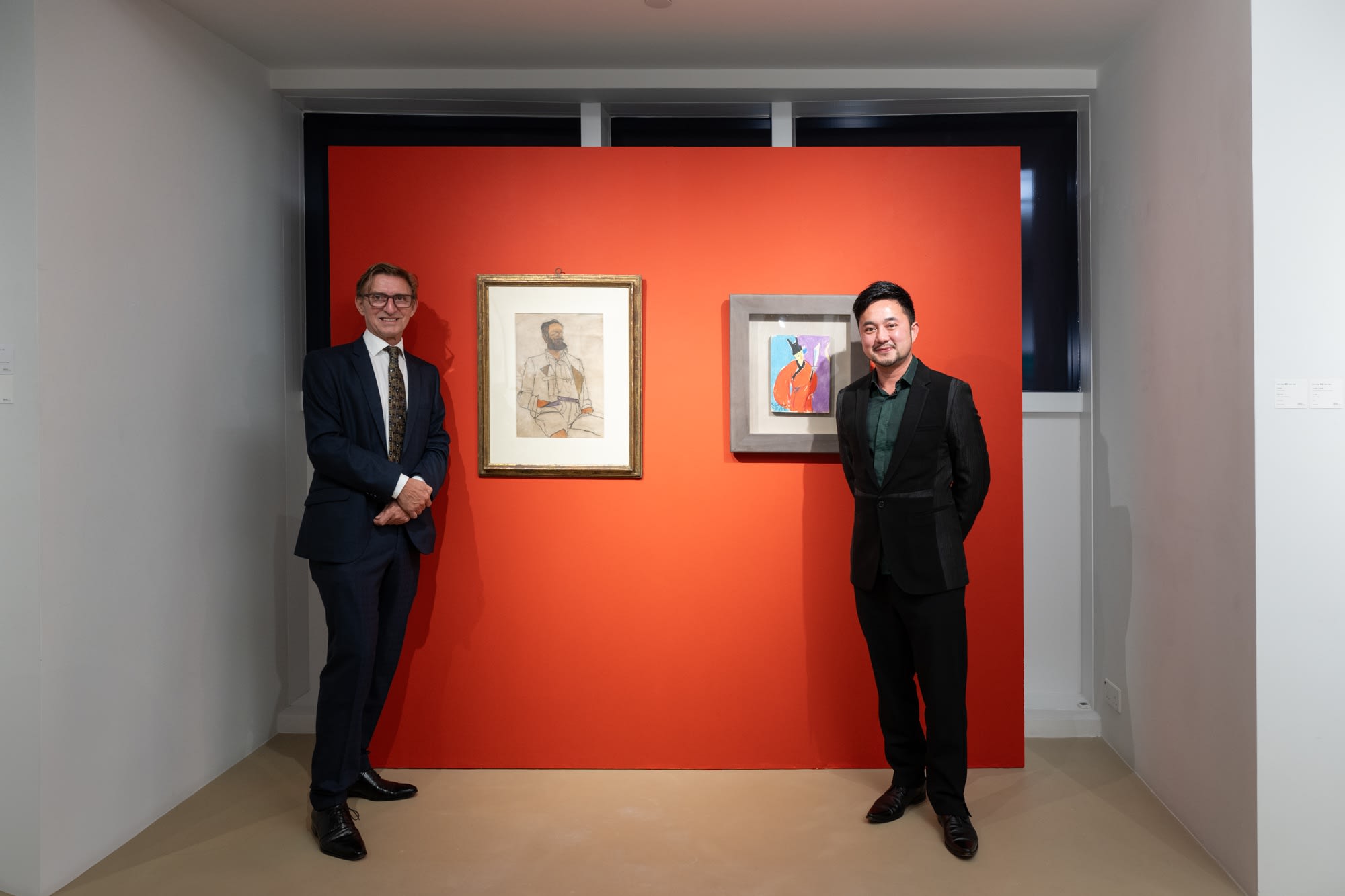
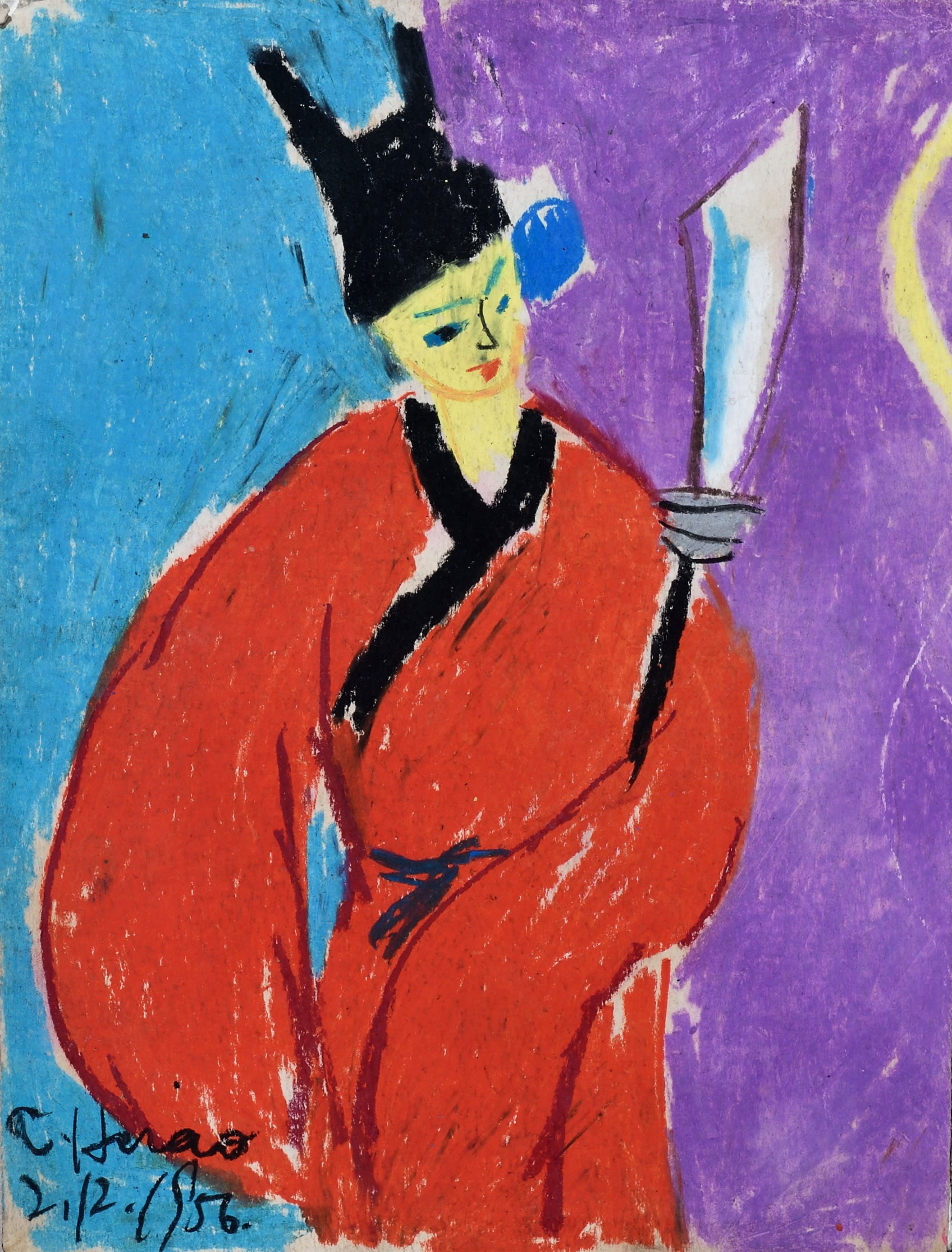
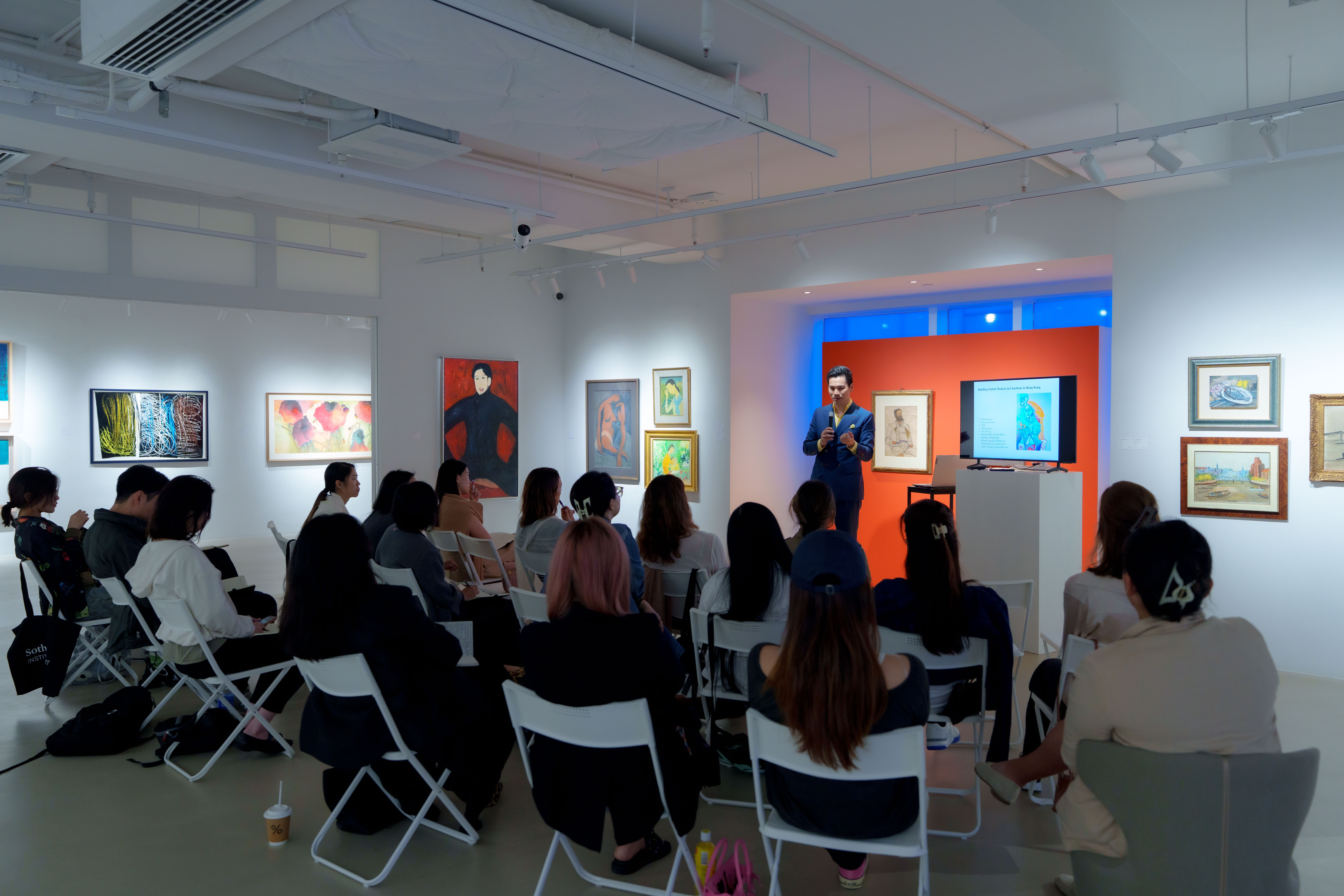
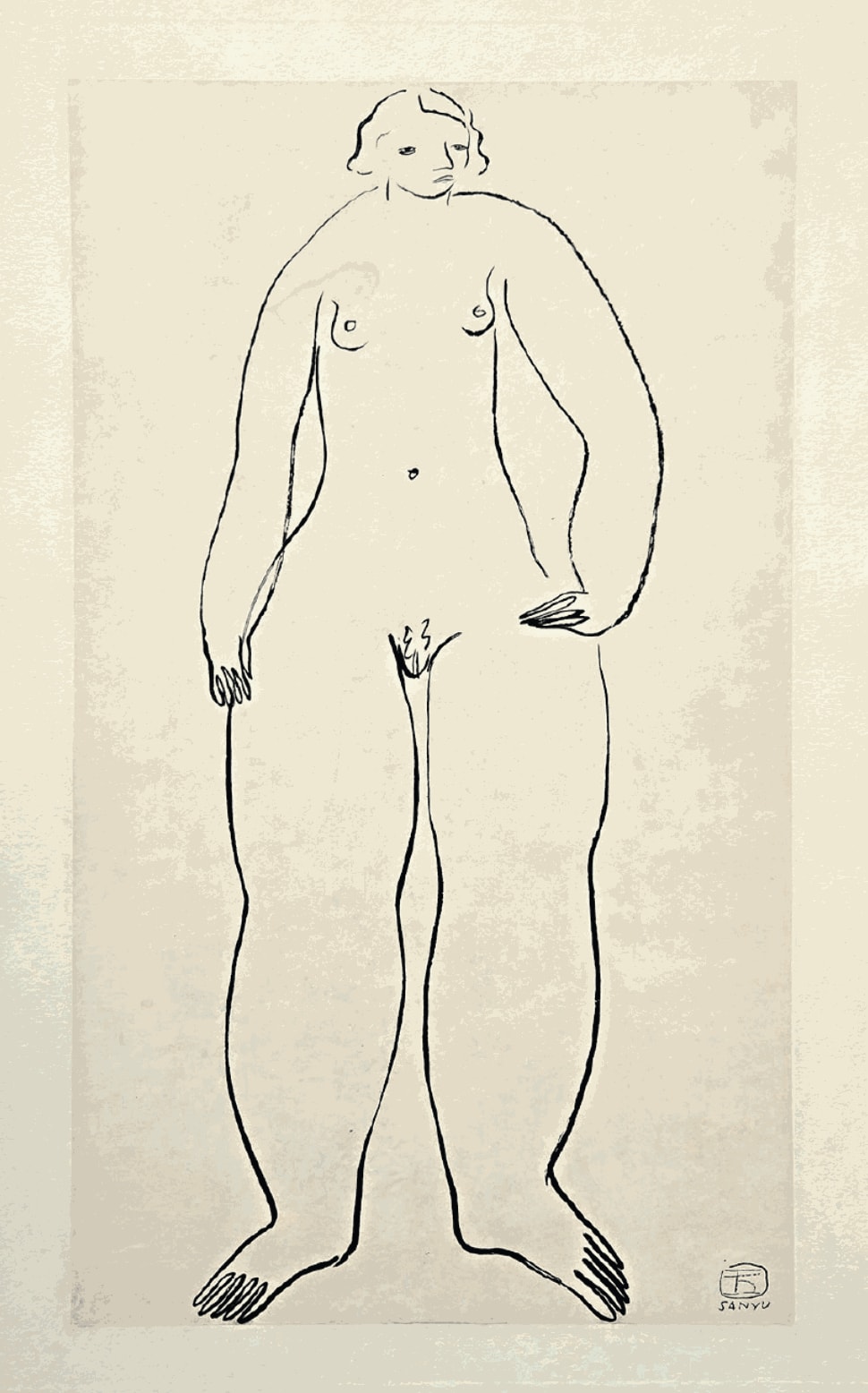




 Exhibition view
Exhibition view